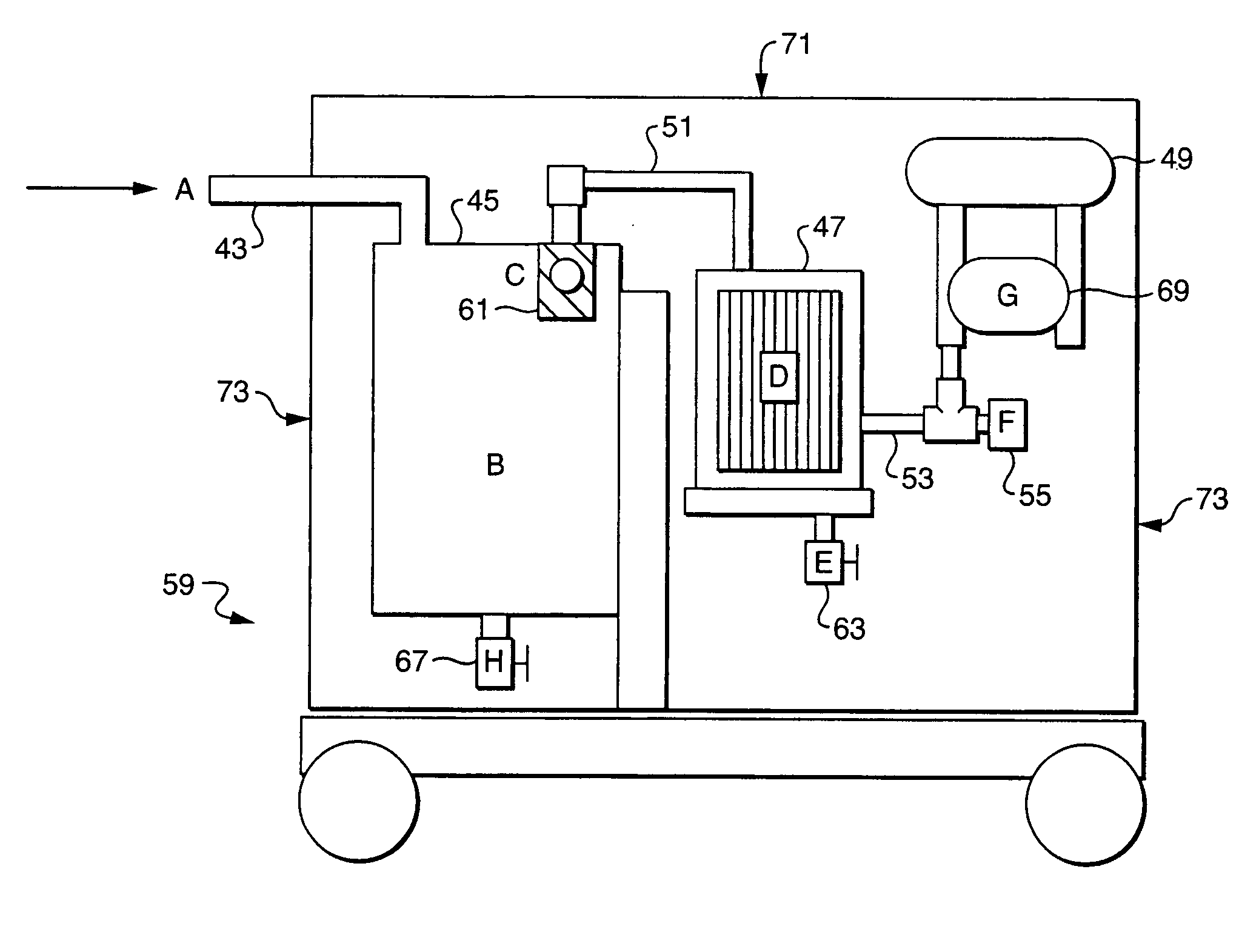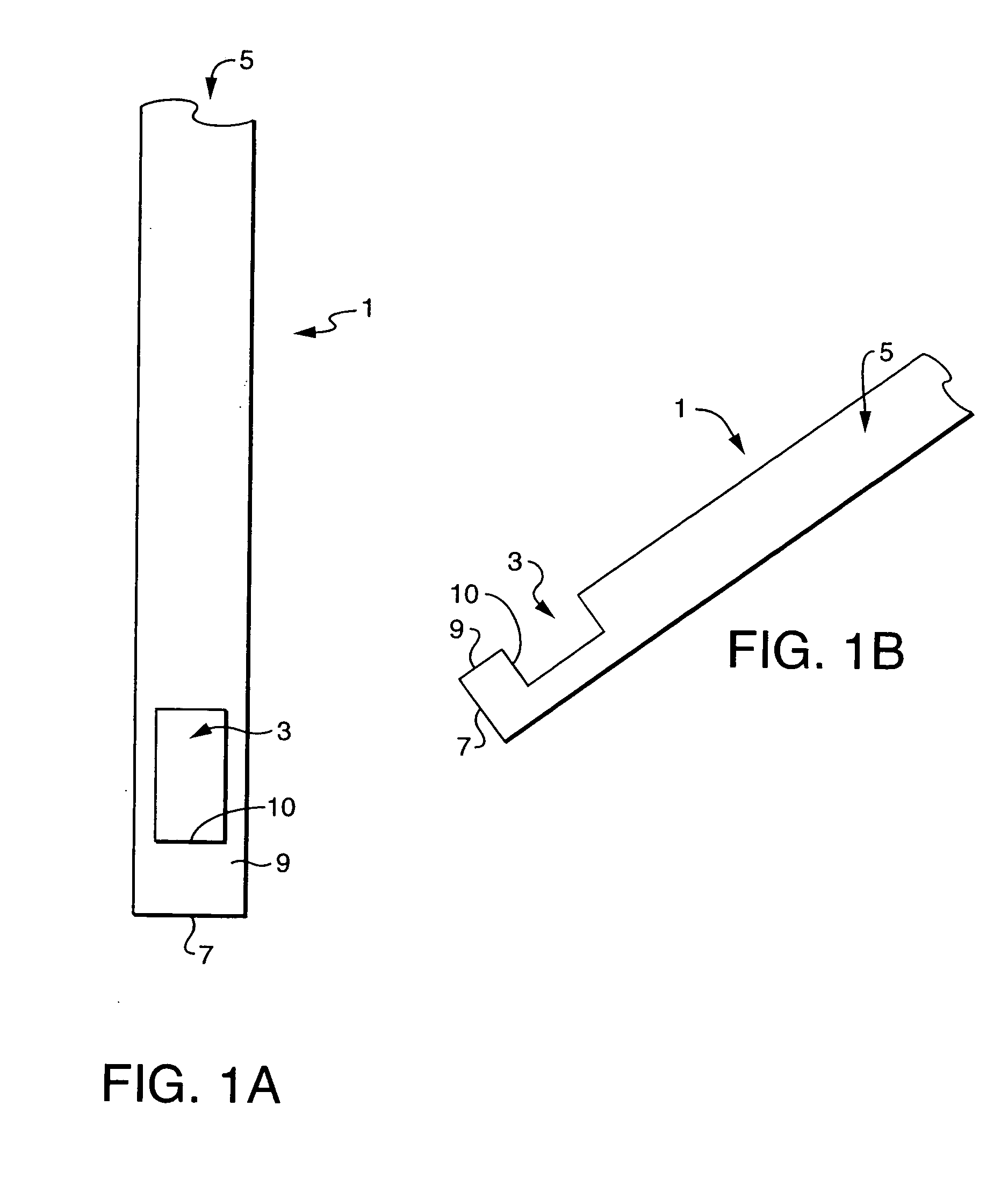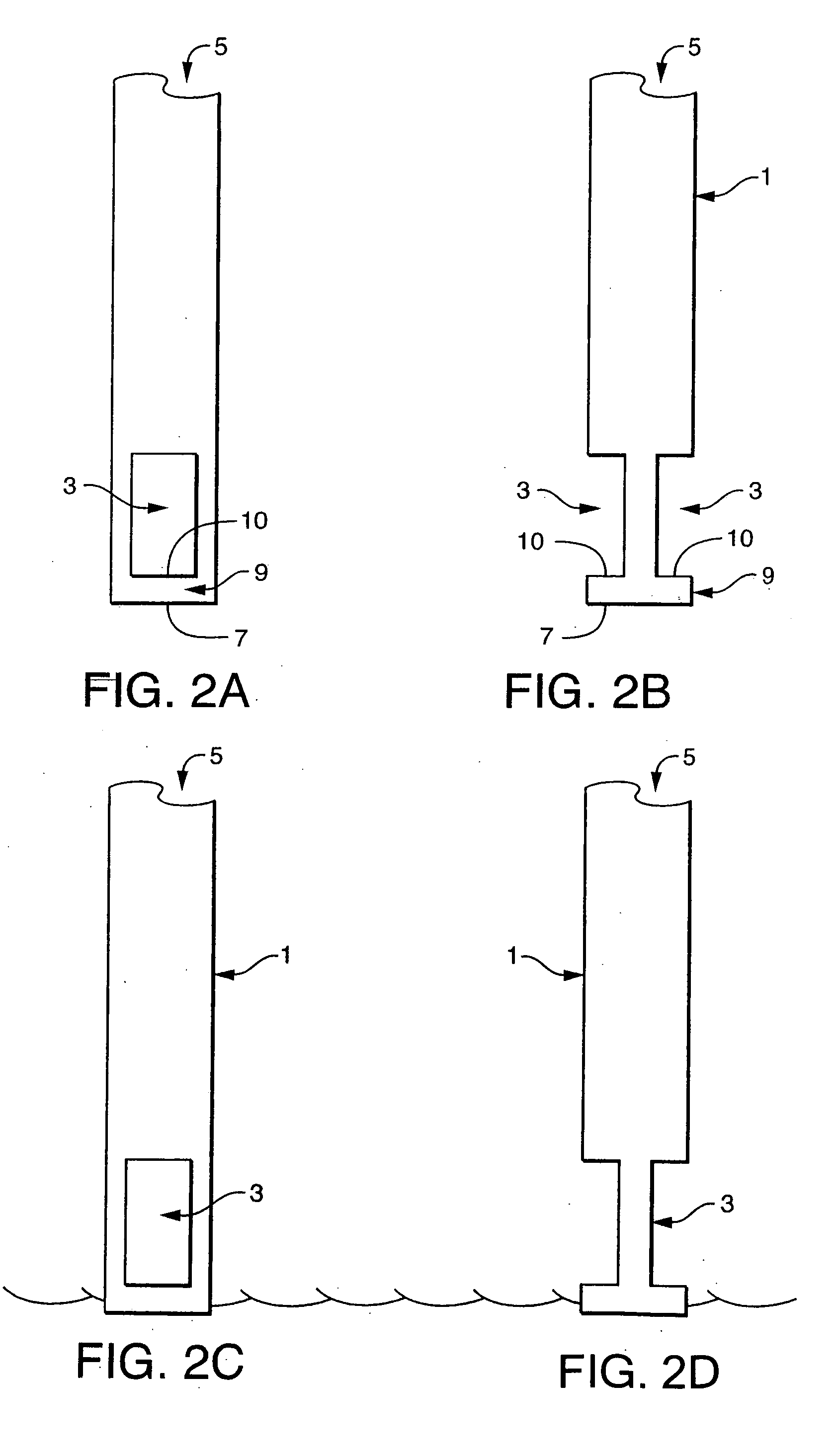Manually controlled skimming of industrial oil contaminants
a technology of industrial oil contaminants and skimming, which is applied in water cleaning, multi-stage water/sewage treatment, separation processes, etc., can solve the problems of contaminating the washing solution with manufacturing oils and heat treating quench oils, adding time and expense, and endangering the health and safety of the workers of the plant, so as to achieve convenient and advantageous use and easy deployment
- Summary
- Abstract
- Description
- Claims
- Application Information
AI Technical Summary
Benefits of technology
Problems solved by technology
Method used
Image
Examples
Embodiment Construction
[0058] The present invention is directed to a method for removing a layer or a batch of an oil contaminant from the surface of solution, and to a system for carrying out the methods of the invention, where the system is small, easily used, and mobile. The small size and mobility of the system means that it is easily deployed, for example by a single operator, at the site of contamination, for example a tank containing an oil contaminated solution in an industrial setting, and that it can be easily moved, for example by a single operator, and from tank to tank in an industrial setting. The small size and mobility of the system, in which an operator manually operates the skimmer, allows for increased accuracy in removing an oil contaminant from small surfaces of solution; it also allows for removal of oil contaminants at locations in which access is limited by space or time constraints.
[0059] The system of the present invention for carrying out the methods of the invention comprises ...
PUM
| Property | Measurement | Unit |
|---|---|---|
| Fraction | aaaaa | aaaaa |
| Length | aaaaa | aaaaa |
| Pressure | aaaaa | aaaaa |
Abstract
Description
Claims
Application Information
 Login to View More
Login to View More - R&D
- Intellectual Property
- Life Sciences
- Materials
- Tech Scout
- Unparalleled Data Quality
- Higher Quality Content
- 60% Fewer Hallucinations
Browse by: Latest US Patents, China's latest patents, Technical Efficacy Thesaurus, Application Domain, Technology Topic, Popular Technical Reports.
© 2025 PatSnap. All rights reserved.Legal|Privacy policy|Modern Slavery Act Transparency Statement|Sitemap|About US| Contact US: help@patsnap.com



